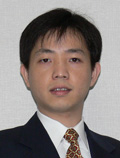
Director's Speech
There have been significant advances in the field of minimally invasive and non-invasive surgeries. Rapid technical advances in medical imaging, including its growing application in therapy and invasive/interventional procedures, have attracted significant interest in the close integration of research in different areas. Image-guided surgery is a general term used for any surgical procedure with indirect visualization to realize the minimally invasive operation. The use of diagnostic images as a means of navigating during surgery, in combination with the use of a positional tracking device, has been a focus of interest following advances in medical imaging and computer technology. Techniques for diagnosis and treatment have been integrated, e.g., through imaging modalities and intervention devices and thus provide high-precision minimally invasive treatment.
Compared with conventional diagnosis and therapy, future research on and clinical trials promoting minimally invasive surgery are expected to shift medical imaging from a primarily diagnostic modality to a therapeutic and interventional aid. Integrated diagnostic and therapeutic processes will be streamlined through the application of intra-operative medical information and robotic-assisted intervention and brought to clinical trials. Our goals include the development and application of the minimally invasive precision diagnostic and therapeutic techniques for intelligent medical system based on bio-medical imaging, bio-robotics, precision and control engineering, as well as a fusional development of imaging modalities and surgical devices.

